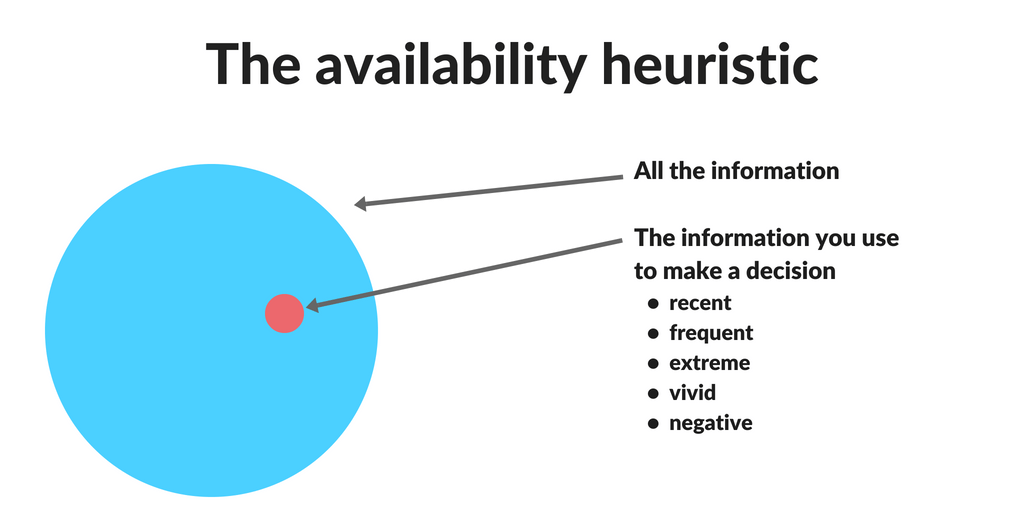For a long time, human beings have been considered a rational animal that judges their environment in an integral and precise way, but, in SETaylor’s words, we are “cognitively deficient”. A metaphor for representing the human being as a maximum optimizer of mental processes. Cognitive strategies to achieve them are heuristic.
Heuristics are mental shortcuts that we use to simplify the solution of complex cognitive problems, they are unconscious rules to reformulate problems and turn them into simpler, almost automatic operations, thanks to them we do not have to think in depth every time a problem arises. However, these shortcuts are not entirely accurate and sometimes lead to errors.
- We can find several types of heuristics in the cognitive processes that we perform daily.
- But in this article we will talk about the ones we use most.
- These are: representative heuristics.
- Availability heuristics.
- Anchor and adjustment heuristics and simulation heuristics.
This mental shortcut consists of making inferences about the probability of a stimulus (person, event, object?) Belong to a certain category, through surface characteristics and using our previous diagrams, we perform this categorization; however, the fact that the information available corresponds to these above patterns does not mean that this is true; as we said earlier, we can fall into a mistake.
An example of heuristics of representativeness can be given in the following situation: imagine that you are introduced to three new people and that you had previously been informed that one of them was a children’s teacher, after a brief conversation, two of them mentioned that yes not as children and the other said yes. If you use representative heuristics, you’ll think the one who says he loves children is a teacher.
This heuristics can be used to estimate the probability of an event, the frequency of a category or the association between two phenomena, this estimate is made through the availability or frequency of cases that come to mind through experience, which would amount to an intuition statistical inference, using memories of our experience as a sample.
An example of this can happen when we are asked questions such as: are there more psychologists or psychologists?To answer this question, we can use this heuristics and see which of the two cases is more available, then if more psychologists come than psychologists. mind, we’ll say there are more psychologists.
When we are in a situation of uncertainty and do not have an experience knowledge of the event, we can take a benchmark. If we do, we will use anchor and adjustment heuristics; where the reference point would be the anchor from which to depart and, through intuitive settings, resolve this situation of uncertainty.
We usually use this heuristics, for example, when we wonder what the average income will be in Brazil. In this case, it would be easy to use our annual income and assess whether we are above or below average. And after making the relevant adjustments, let’s say the amount we deduct that may be the average income in Brazil.
One mistake that arises from this heuristics is the effect of false consensus, a cognitive bias by which we overestimate the degree of agreement that others have with us, infer their beliefs, opinions and thoughts according to ours, and create this false consensus. In this case, our opinion acts as an anchor to deduce the thoughts of others.
This is the tendency to estimate the probability of an event based on how easily we can imagine it. The easier it is to create a mental image, the more likely such an event is possible.
This heuristics is strongly associated with counterfactual thinking, a way of thinking from which we seek alternatives to past or present facts or circumstances in order to relieve our pain, even if it is true that sometimes all we can do is increase it. An example of counterfactual thinking is the typical “what if” is the statement of what might have happened if something had changed.
Another example is the fact that sometimes the second on the podium is less happy than the third, in fact, for the second, it is very easy to simulate the situation of having been the first, and now it is in a worse situation. On the other hand, for the third, it is easy to imagine the situation in which something might fail and cause it to stay off the podium, so it is now better, which generates greater satisfaction in the third than in the second.
Now that we know about heuristics, I’m sure you’ll remember many examples in which we use them. Although they are not accurate and based on intuition, what are our evolutionary means of?Weapons? To treat certain problems quickly and effectively. we make the mistake of using these mental shortcuts when we make relevant decisions in our lives. Very thoughtful.

